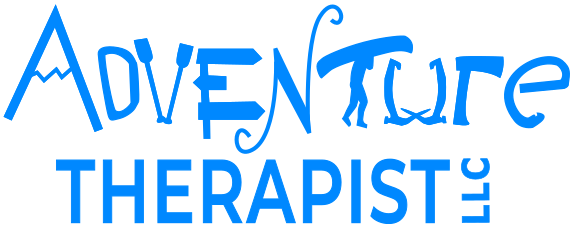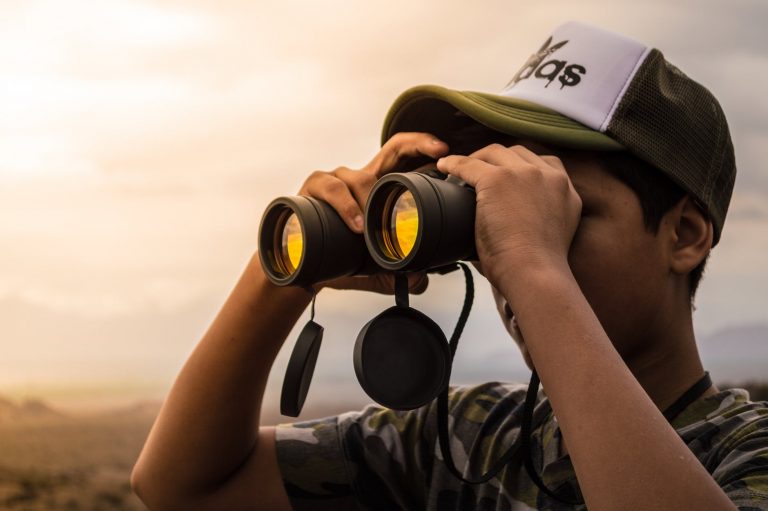Creating Engagement through Limitations
The final element of archetypal adventure is the use of Limitations for individuals or the group. “Limitations” refers to the little rules that facilitators use to add challenge, moderate participation and to mimic real life. This might be a rule changing the way that participants are allowed to communicate (Limited Speech), a request to use a blind fold or to pick a “focus point” (Limited Visibility), or a rule that states that all group members must stay in physical contact with each other throughout an activity (Connected). The limitations that we choose to use as facilitators both change the activity to suit the challenge level that our clients or groups need to thrive and serve as a way to build isomorphic connections between what we know about our clients’ challenges and the activity that we are creating. Before we dig into these two different aspects of facilitating, lets review the different archetypal limitations:
Limited Speech – A client or the group’s speech is limited. This may be a “no talking” rule, it might be limiting specific words, or dictating who can or cannot speak during the activity.
Limited Mobility – A client or the group’s ability to move is limited. This may be a rule that prevents the movement of feet, hands, or other body parts, or limits the ways in which a participant may get from one place to another.
Limited Visibility- A client or the group’s ability to see is limited. This may be asking participants to close their eyes, wear blindfolds, pick a focus point, or even to wear lenses that alter one’s vision.
Person as a Prop – This category is a bit “meta”, but this refers to the previous archetypal element of adventure “use of props”. In this limitation, a person in the group might serve as a Resource, Hindrance, Transport, Support, Extension of Self, Replacement, or Checkpoint (if this doesn’t make sense take a moment to go check out my last post on Adding Nuance with Props)
Connected – Clients or group has to maintain connection during the activity. This can be holding hands, staying connected to the same object, maintaining eye contact, etc.
Not Connected – Clients or group may NOT establish connection.
Participation – A client or the group’s participation is limited. Often, this is accomplished through another limitation, but it is included in a more vague way to allow for facilitator creativity. An example of limited participation that is not another category would be a rule that only one specific group member can tie knots for the group.
Engagement through Optimal Challenge
The first way that Adventure Therapists intentionally use limitations is as a strategy to make sure that the activity is not too easy or too hard… but JUST right! Oftentimes, if I’m working with a particularly capable group, I’ll add limitations to add extra challenge to the activity. If the participation of one client is limiting or interfering with the opportunity for another participant to participate, I might add a limitation that allows both participants to have a meaningful and challenging experience. Creating optimal challenges during our activities boosts client engagement, which in my opinion is more likely to lead to meaning and momentum for our clients, too.
Engagement through Metaphor
We all have our limitations in life. Whether they be financial, logistical, emotional, social, etc., it’s part of the human experience. Since this seems to be a universal part of life, it makes sense that incorporating them into our activities makes it more likely that our clients will make the metaphorical connection! This has been a powerful approach for me over the years, and I’ve found that often it comes with little cost to the overall activity. Often, I’ll use what I know or suspect from my ongoing assessment of clients’ behaviors, previous comments or conversations, etc., to glean insights about specific clients that might connect with a certain limitation. For example, I might choose to limit a participant’s speech if I’ve noticed that they limit their own speaking during other activities or if that is a hypothesis of the family dynamic. The limitation might get lost in the overall experience, but I’ve found that more often than not, the seed takes root, and the connection between the imposed limitation and their limiting behavior or dynamic is made.
** A Word of Caution **
I just got done saying that limitations are universal. Sometimes, enacting them in an activity can be a trigger for a previous experience when they were unwillingly imposed. As facilitators and therapists, it is important to acknowledge our power differential, to ask permission and gain perspective before imposing limitations. This is at the very core of what Trauma-Informed Adventure Therapy is.








